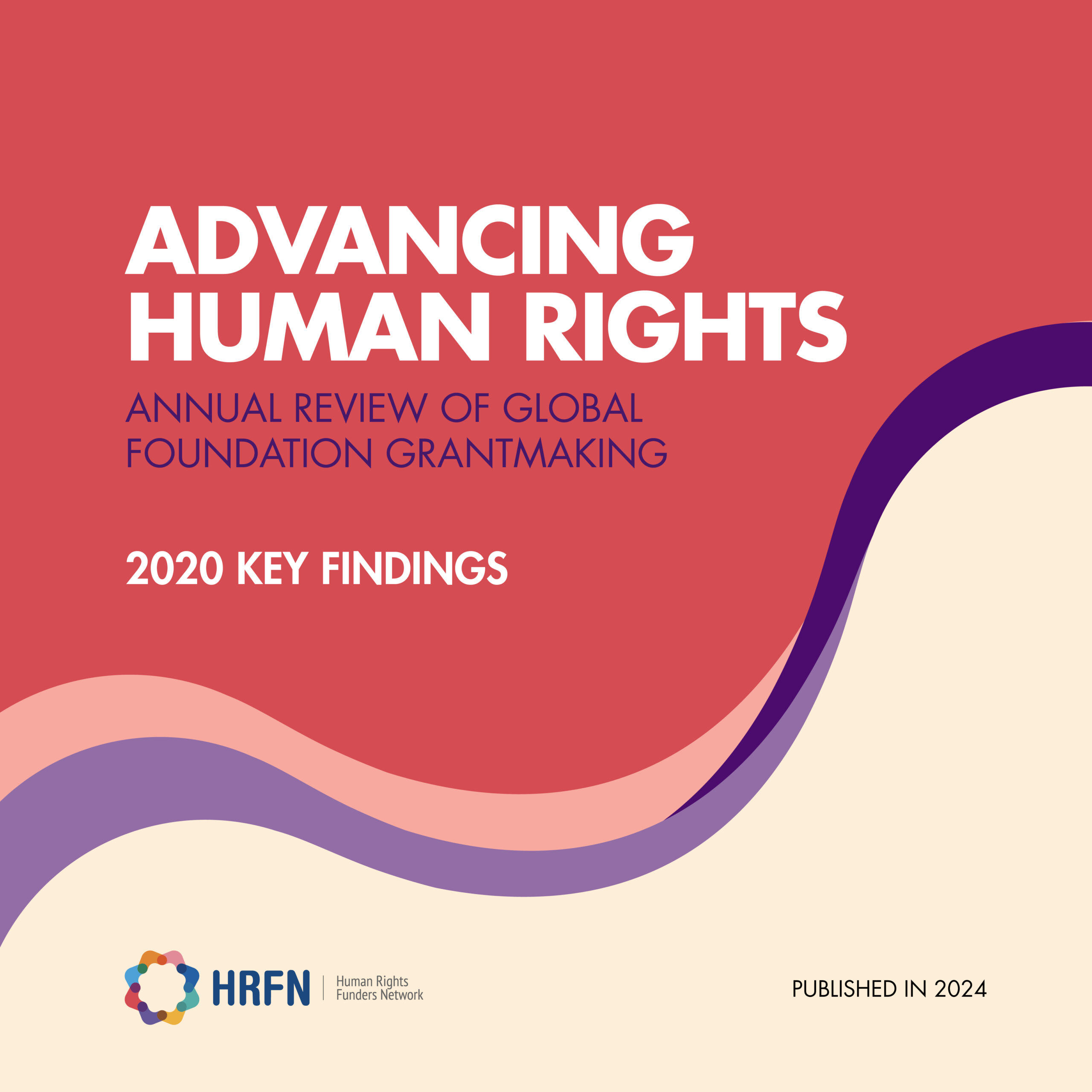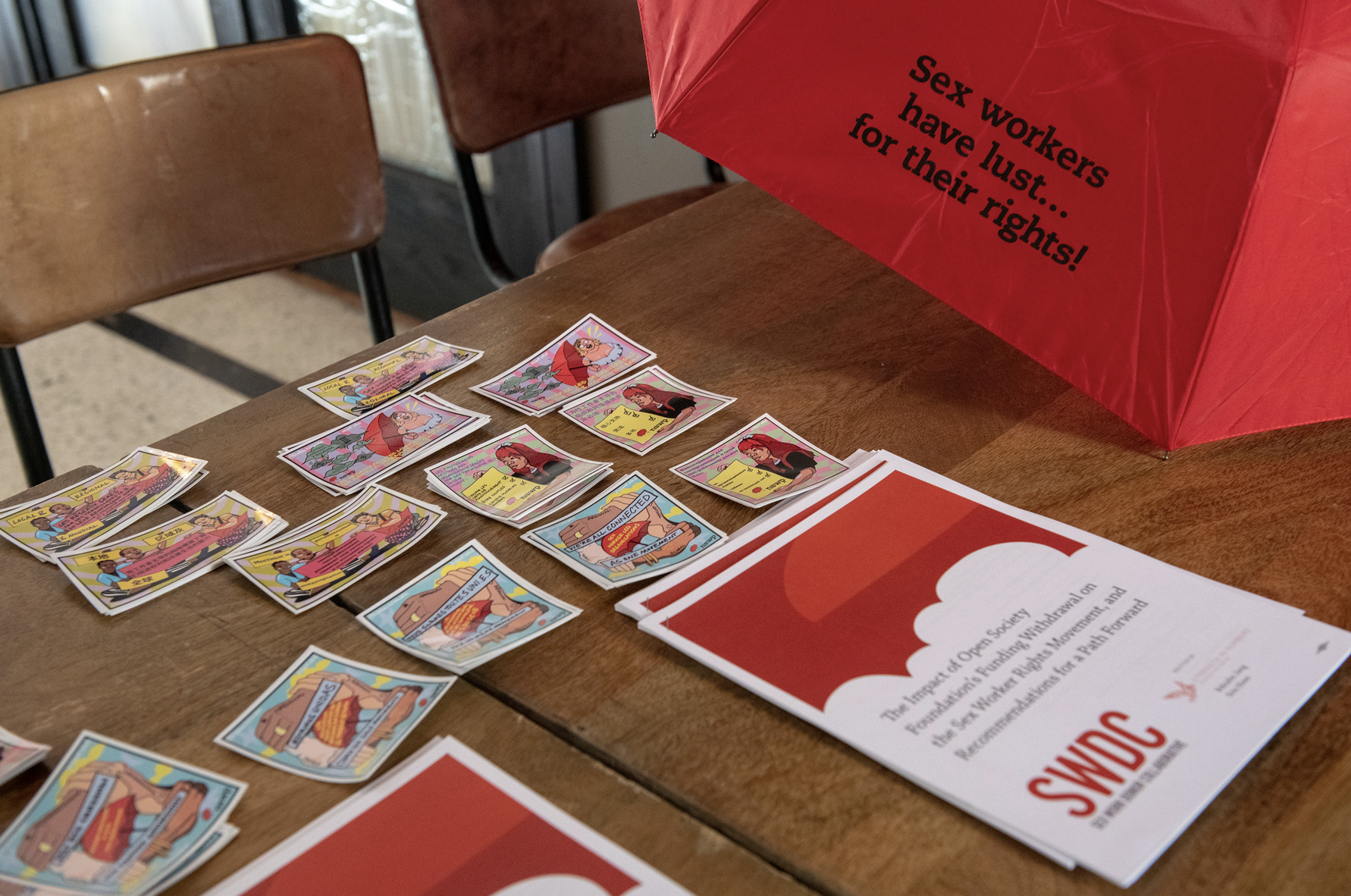Human Rights and the Sustainable Development Goals: Are the SDGs living up to their promise to leave no one behind?
By Inga Ingulfsen (Research Analyst, Global Partnerships) and Anna Koob (Knowledge Services Manager) at Foundation Center

Inga Ingulfsen

Anna Koob
Much has been made of the commitment to human rights principles reflected in the Sustainable Development Goals (SDGs), a set of 17 goals covering a range of social and economic issues to guide the global development agenda through 2030. Rooted in a promise “to leave no one behind” and seeking to “envisage a world of universal respect for human rights”, the 2030 Agenda for Sustainable Development hits all the right rhetorical notes in terms of communicating a commitment to human rights principles. As our partner on the Advancing Human Rights research, Sarah Tansey from HRFN has observed, “The SDGs acknowledge rights in ways that their predecessor, the Millennium Development Goals (MDGs), neglected to do.”
As collectors and purveyors of data about global philanthropy through our work at Foundation Center, we take a couple of points for follow-up from the 2030 Agenda’s stated goal of “[realizing] the human rights of all”, specifically:
1) How does funding aligned with the SDGs overlap with funding that we’ve identified as supporting human rights?
2) To what extent have human rights funders and advocates succeeded in leveraging the SDGs to mobilize support and resources, in particular for those populations that have traditionally been left behind?
- How does funding aligned with the SDGs overlap with funding that we’ve identified as supporting human rights?
The SDGfunders platform, which Foundation Center developed in 2015 to track foundation funding that aligns with each of the 17 goals, tells a story of broad-based support for the SDGs: since 2016, when the goals officially took effect, philanthropic organizations have awarded over 600,000 grants totaling more than $28.9 billion. Of this amount, $1.9 billion (7 percent) also appears in Advancing Human Rights’ Foundation Maps: Human Rights, illustrating a very modest overlap between funding for the SDGs and that focused on rights-based work.

This isn’t necessarily surprising: the criteria we’re using to identify grantmaking for the SDGs, while inclusive of the rights-based work we track under Advancing Human Rights, also includes funding for relevant service-oriented initiatives.
Need all funders who see themselves as supporting the SDGs do so through a rights-based approach? While it’s an arguable question given the rights rhetoric of the 2030 Agenda, it’s clear that not all funders who support the SDGs frame their funding in these terms. A more meaningful question considers whether human rights activists see the SDGs as an opportunity to mobilize resources for their work. To explore this, we talked to advocates for the rights of two population groups – people with disabilities and sex workers – that have, each in their own unique ways, been marginalized or disregarded in global development processes.
- To what extent have human rights funders and advocates been successful in leveraging the SDGs to mobilize support and resources, in particular for those populations that have traditionally been left behind?
The SDGs and Disability Rights: Notable Advances
Diana Samarasan, Founding Executive Director of the Disability Rights Fund, a grantmaking organization that funds advocacy by persons with disabilities shares that while “civil society space is being restricted for human rights defenders around the world, for disability rights it’s not really – it’s growing.” Samarasan points to the 2006 adoption of the Convention on the Rights of Persons with Disabilities as a catalyst for the recognition of persons with disabilities in the broader development agenda. She notes that the process by which the SDGs were adopted was fairly inclusive, involving people with disabilities in consultations at national, regional, and global levels – eventually as a stakeholder group. As a result of targeted advocacy by this group, persons with disabilities are explicitly referenced in targets associated with seven of the 17 SDGs – an improvement over the MDGs, which did not mention persons with disabilities at all.
According to Samarasan, the SDGs are helping to mobilize resources for persons with disabilities, particularly from bi- and multi-lateral funders. The UK’s Department for International Development, for example, indicated in late 2016 that disability will increase in importance in their development aid, citing the “leave no one behind” ethos of the SDGs, and more recently announced that it will be hosting the first-ever Global Disability Summit to promote disability-inclusive development in July 2018.
While the Advancing Human Rights trends analysis of funding data for human rights pre-dates the launch of the SDGs, it illustrates a growing commitment among bi- and multilateral funders to disability rights while the goals were being negotiated. From 2011-2015 the initiative identified a 65 percent increase in funding for disability rights among donors reporting to the OECD Creditor Reporting System from 2011-2015. The jump in the number of disbursements was even greater–this figure more than doubled from 251 disbursements identified in 2011 to 536 in 2015.

This contrasts somewhat with private philanthropic funding, in which support for disability rights decreased from 2011-15, despite growth in human rights funding overall. However, this drop is partially due to particularly high funding levels in 2011, the result of a few large investments, and balanced by slight growth in the number of grants for disability rights during this period.

Among philanthropic foundations, Samarasan notes that while there’s still a long way to go in terms of seeing meaningful shifts in funding for people with disabilities, there does seem to be increased recognition of the intersectionality of disability rights issues with human rights funding for women and girls, for example. “Now the conversation is, ‘We are committed [to funding disability rights] but we don’t know how. We are not in the networks, we don’t know how to make our funding accessible, so how do we do it?’” This shift in conversation is exemplified by Ford Foundation’s recognition that its focus on inequality requires attention to disability issues and is happening amidst broader trends in the field in which more funders are framing their philanthropy through a social justice lens. Moving forward, it will be interesting to see if greater commitments for the inclusion of people with disabilities from funders like Ford Foundation contribute to sustained growth in this area of funding.
The SDGs and Sex Workers: Still Struggling for Visibility
In contrast with the relatively inclusive experience of disability rights activists, sex workers as a group are never explicitly mentioned in Agenda 2030 and the associated SDGs. SDG indicators around employment status discuss the protection of labor rights and include a reference to “precarious employment,” and while they mention women’s empowerment and employment, as well as HIV/AIDS and other points of intersectionality, the existing framework puts the burden on sex worker activists to build on these concepts and make their case for inclusion under the SDGs.
To be sure, the stigmatization of and ongoing debates around the criminalization of sex work remain a major barrier to meaningful engagement of sex workers in global development frameworks more generally. An online consultation on its sex worker policy initiated by UN Women in late 2016 was met with criticism among rights activists who pointed out that the short consultation period and online platform effectively excluded voices from the most marginalized.
“In general, I would not say that the SDGs have done any miracles for sex workers,” Nadia van der Linde at the Red Umbrella Fund observes, noting that it’s difficult to identify instances where the SDG framework has helped to leverage funding for this much-stigmatized group.
Among the specific populations groups for whom we track funding as part of the Advancing Human Rights research, foundation funding for sex workers is especially small: just .2 percent of human rights funding from 2011-2015. Over the 5-year period, funding spiked in 2013 but on average, hovered around $4 million per year. Funding for areas representing a small proportion of funding are particularly susceptible to dramatic shifts in year-to-year grantmaking levels due to the actions of one or a few foundations or the awarding of a very small number of very large grants. A more in-depth 2014 study authored by Red Umbrella Fund, among others, identified a total of $11 million in 2013, in part due targeted data collection from grantmakers not included in our data set. Both research initiatives support the finding that the number of funders providing substantial and ongoing support to support sex worker’s human rights organizing through strategic and sustainable investments is very small.

Based on the data, it’s difficult to point to a sustained trend in foundation funding for sex workers. Bilateral and multilateral funding for sex worker rights, on the other hand, plummeted from 2011-2015, falling from a peak of $30.7 million awarded in 2012, when contributions from Sweden and the Global Fund accounted for the vast majority of funding, to just $2.4 million awarded in 2015. This precipitous drop may be related to criticism leveled against SIDA, Sweden’s development agency, by Swedish women’s groups for its support of organizations that favor the decriminalization of sex work.
These statistics seem to require more investigation as sex workers human rights defenders do not consider the findings in congruence with reality, and question whether some of the disbursements identified here – particularly those awarded by the United States and Sweden – truly support the human rights of sex workers. This feedback also emphasizes the need for more in-depth, context-specific research, particularly where the intention of a particular grant is difficult to distill through algorithmic searches.

Conclusion
In the words of HRFN’s Sarah Tansey, “Human rights funders and advocates successfully ensured that the SDGs incorporated a human rights lens. Advocates now work to hold governments accountable to those commitments – and it’s up to philanthropy to determine where its support can help fill the gaps.” We hope the Advancing Human Rights research can help in this effort — providing insights into who’s funding what, where to spark candid conversation around critical questions: Who’s being left behind? And what can we do to ensure the SDGs are truly inclusive?



